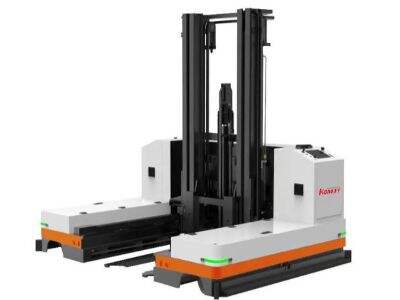人々は自動車を運転する喜びと結びつける傾向があります。車は私たちを公園や映画館、さらにはロードトリップの時など楽しい場所に連れて行ってくれます。しかし、その車は生産される工場からディーラーまでどうやって運ばれるのでしょうか? それが物流の出番です。物流とは、物資を一か所から別の場所に移動させるための専門用語です。主にこれは、工場からディーラーへ、そして最終的に顧客へと車を移動させるプロセスについてです。
一度に多くの車を移動させるのは大変な作業です。彼らは数千台の車を輸送し、すべての車両が損傷することなく時宜に合わせて目的地に到着する必要があります。しかし、AGV技術のおかげで、この作業ははるかに簡単かつ迅速になりました。
AGVとは?
自動誘導車(AGV)これは普通の車と異なり、特別な運転手なしに倉庫や工場内のみで移動できる専用車両です。AGVが他と異なる点は、人が操縦する必要がないという点です——これらの自律型誘導車は事前にプログラムされたルートに沿って走行します。また、センサーを使用して障害物を検出し、移動中に予定された経路を維持します。
AGV(自動誘導車)は、列車の位置決めから保管および再保管まで車両を移動するために使用されます。ロボットは製造ラインから車両を降ろし、それらを保管場所に運んだり、または保管からドックに運んでトラックや船で出荷する手配も行います。これによりすべてが加速し、待ち時間が短縮され、ミスが減少し、作業がより容易になり、誰にとっても良い結果となります。
AGVは自動車物流に有利です。
AGVはフォークリフトや他の倉庫設備よりもずっと速く、大きなメリットがあります。そして AGVハンドリングロボット 人々よりもはるかに早く車両を移動できます。車両は休憩やおやつなしで、目的地まで他の車両を運び続けることができます。彼らは昼間だけでなく夜中にも作業できます。
これは、非常に多くの車両を非常に短い時間で移動できる可能性があり、迅速さが厳しい納期を持つ工場にとってすべてを意味することを意味します。AGVは、自動車メーカーがディーラーに多くの車両を迅速に届けるのに役立ちます。また、これによりプロセスでの誤りが少なくなります。AGVはプログラムに組み込まれた経路に従うため、人間の作業員が犯すような誤りを犯す可能性が低くなります。
より速く、より安全な自動車ロジスティクス
AGVは、車両を安全に移動させるためにも優れています。人間が関与することでミスや事故が発生する可能性があります。簡単に何かにぶつかるか、完全に道を外れるかもしれません。 システム AGVは常にプログラミングに従って動作するため、すべてを効率的に運用するための一貫したレベルの管理を提供します。
これはすべて、車メーカーのツールベルトに加えられ、ディーラーや顧客への納期短縮を約束します。自動車メーカーは、車が適切にそして時どき輸送されることに確信を持っています。生産ラインの作業員からディーラーの営業スタッフまで、そして何よりも自分の新しい車を待っている顧客まで、みんなが幸せです。
では、自動車ロジスティクスの未来はどうなるのでしょうか?
技術はさらに向上する一方なので、自動車ロジスティクスはさらに興奮するような変化を迎える可能性があります。自律走行車(AGVs)はその始まりに過ぎません。 ブリッジクレーン 将来的には、製造された車や配送に関連するさまざまな側面を扱うことができる、より高度な機能を持つインテリジェントなロボットが登場するかもしれません。
しかし、完全に確実なことは、AGVへの移行によって車の輸送方法が完全に革新されたことです。このような驚異的な車両のおかげで、車はこれまで以上に迅速かつ正確に取り扱われています。そして、この技術をリードするKOMAYは、自動車ロジスティクスの未来が非常に明るいものであることを保証します。すでにこれが可能になっていますが、今後さらに進歩が期待でき、工場から私たちの駐車場まで車を届けるプロセスがさらにスムーズで速くなるでしょう。

 EN
EN
 AR
AR
 HR
HR
 CS
CS
 DA
DA
 NL
NL
 FI
FI
 FR
FR
 DE
DE
 EL
EL
 HI
HI
 IT
IT
 JA
JA
 KO
KO
 NO
NO
 PL
PL
 PT
PT
 RO
RO
 RU
RU
 ES
ES
 SV
SV
 TL
TL
 IW
IW
 ID
ID
 LV
LV
 LT
LT
 SR
SR
 SK
SK
 UK
UK
 VI
VI
 SQ
SQ
 HU
HU
 TH
TH
 TR
TR
 AF
AF
 MS
MS
 BN
BN
 MN
MN
 KK
KK
 KY
KY
